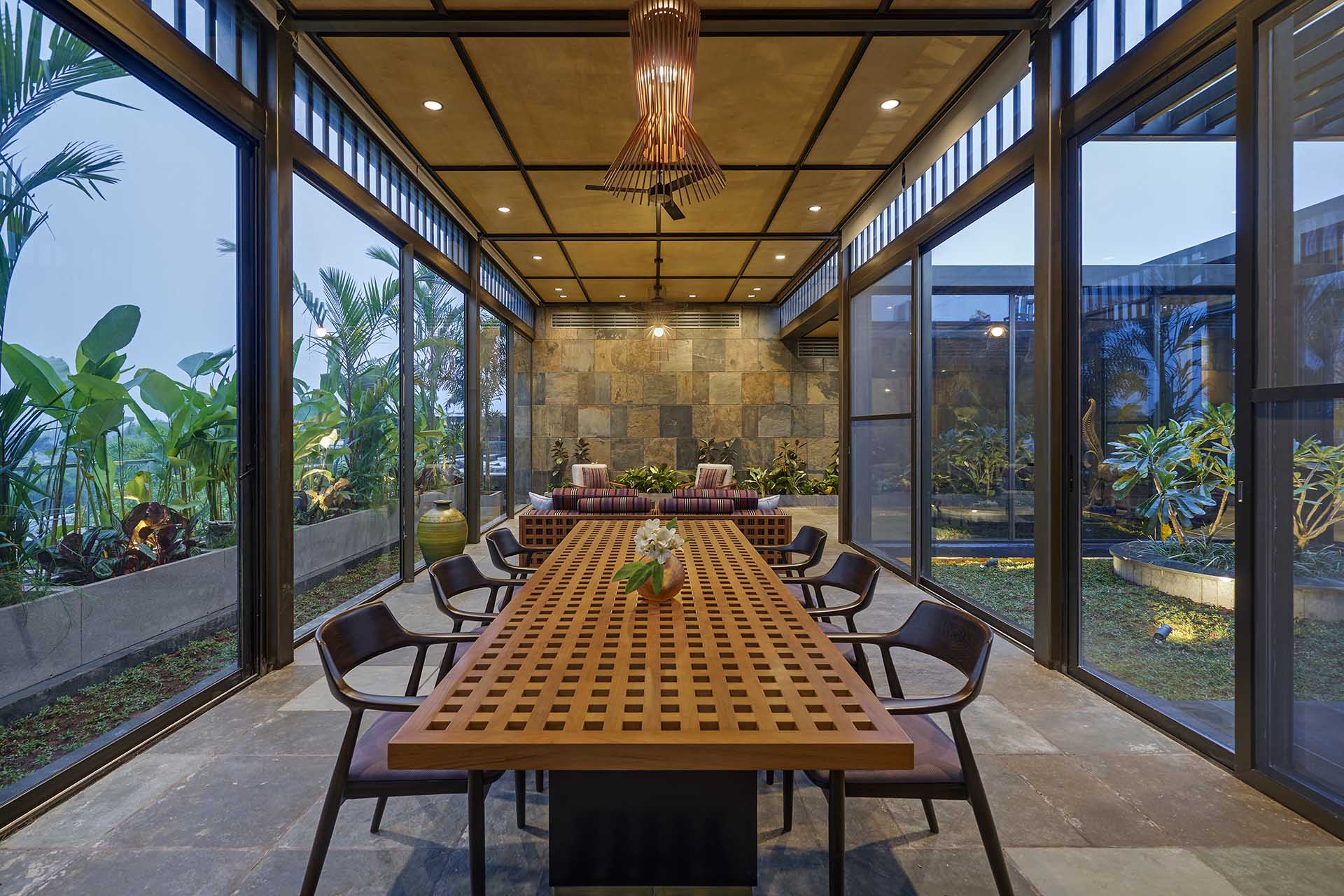Tracing Roots
As Architects, we find ourselves revelling in the myriad forms of inspiration that the country’s heritage imbues our built landscape with. India has embraced neoteric skyscrapers with equal grace that it has welcomed palaces and ancient fortresses with. Design in the Indian subcontinent unveils itself with the abandon of any constrictive expression or genre; creating an architectural and design identity that is a melange of the old, new and the anticipated.
The balance ideally lies in striking the equilibrium between traditional and modern nuances in spaces ― a harmonious amalgamation of the two styles, creating a modern-traditional design language that redefines aesthetics.
Melding the contemporary design ethos with traditionality in the right doses creates spatial experiences that are effortlessly reminiscent of one’s roots. Architecture and Interior Design endeavours should conjure a sense of ‘belonging’ in the modern context, allowing end-users to feel tethered to their identity whilst securing the leverage to create ingenious spaces.
Bridging the Gap
Spaces created to address meaningful spatial interventions need to respond to the context and the site’s vernacular effectively. An intrinsic interpretation of the locale’s genius loci allows the built spaces to reflect the DNA of the space and its inhabitants cohesively. A conscious narrative woven around sustainability, locally available materials, and environmentally-conducive building techniques at the interior and exterior level is always a plus.
India is a repository of craftsmanship, bespoke materiality and artisanship that has been sculpted to perfection over generations. The percolation of these elements into the modern design grammar bestows the latter with an elevated sense of value while carving itself an individualistic niche.
Travel experiences, exposure to local construction techniques and an eye for detail subliminally make their presence felt in the plethora of spaces one engages with. Amenable architecture factors-in the role of form and function. In spaces that entwine traditional and modern styles, one witnesses the coming together of state-of-the-art upbeat design interventions that cross paths with the warmth of crafted additions. The aspiration in hindsight is to create a space that is truly one’s own, versus the process of replicating design templates from that past that only exude a singular aesthetic and function.
The inclusion of local art, craft, decor and methodologies also produces innumerable opportunities for us as creators and end-users to uplift the treasured artisan community to whom we owe the spirited legacy of heritage craft. Their bespoke creations add a sense of curated magnificence to the spaces we create and we, in turn, preserve the age-old traditions they have been the safe-keepers of.
Conflating Styles Effortlessly
The ideal approach toward creating a space that celebrates the strains of these contrasting styles is by understanding that the two components come together to create a distinct palette altogether! The conversation is not centered around the obsolescence of ‘old vs new’, but rather a marriage of the two styles to create spaces replete with character.
A modern space overruled by sleek geometry can be punctuated with curated antique furniture and traditional elements to render the space with an inviting persona. Introducing touches of rooted design and traditionality in the form of upholstery, drapery, artwork, thrifted antiques, sculptural moments and bric-a-brac can introduce a familial perception in a space that also engages contemporary design nuances. Spaces like living areas, study spaces, bedrooms and lounges make for a great canvas to fuse these styles.
A plush drawing room can be imagined with a focal sofa anchored by a handwoven rug, sprinkled with a collage of earthen or metallic sculptural planters, modern abstract art and a repurposed door as a coffee table ― the possibilities are endless when combining styles! Materials like red oxide across floors and walls, cane wickerwork, seasoned wood, and textural lime-plaster/stucco-finish walls are timeless in their demeanour. Layering spaces with a collage of lighting (both ambient and decorative) will ensure the space looks well-composed.
As Architects, our immanent responsibility is to preserve and promote the binding of design styles that pay homage to our roots and crafts while creating novel spaces. We can encourage conversations around design that revives our design legacy and plunges into the horizon of the anew.
Taliesyn-Design & Architecture

